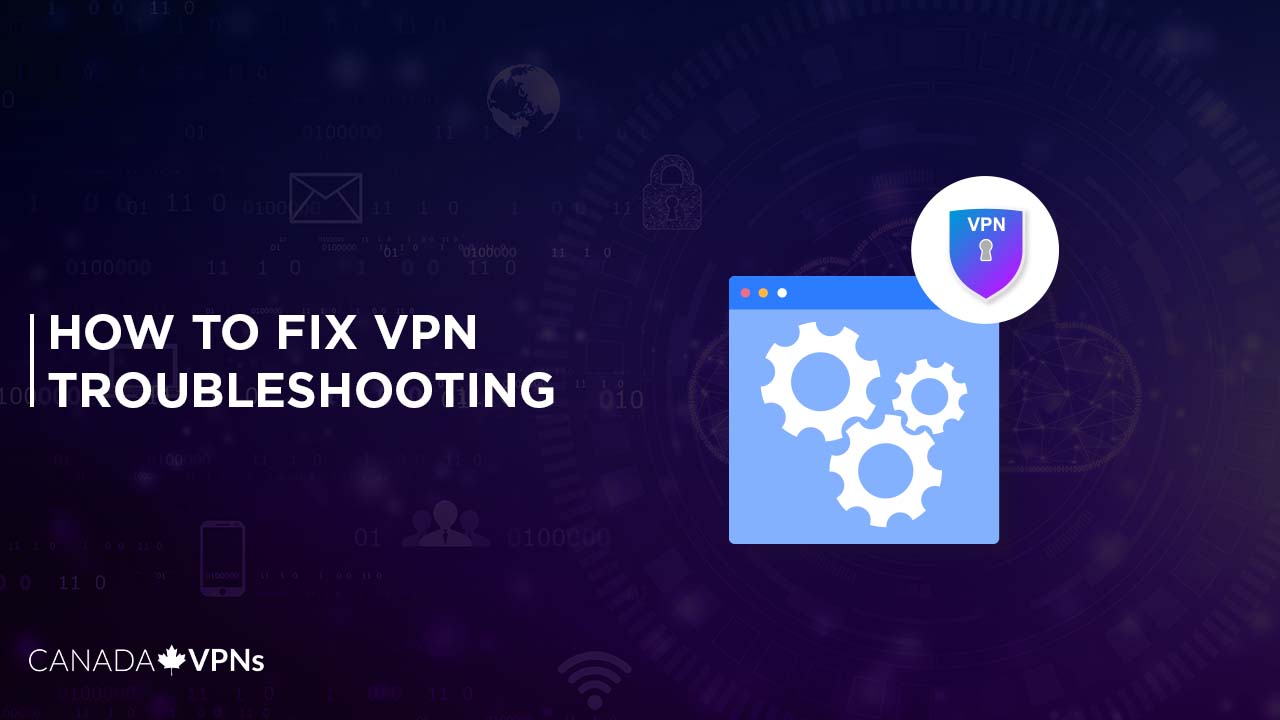VPNs are a terrific tool for today’s internet users and are incredibly reassuring for people working from home. However, you could lose the safety of your online anonymity if you face site-to-site VPN Troubleshooting and cannot access some websites and services.
For those who use a VPN client to connect to business, computers face VPN Error 412; site-to-site VPN troubleshooting may be more frequent. In order to stop “Error 412” from occurring again, you must carefully examine all possible causes.
In the event of issues, your VPN will frequently disconnect from the internet. Numerous elements, like the following, could make it difficult for your VPN to connect: An unavailable VPN server, your ISP limiting your ability to use a VPN (internet service provider), or you can’t connect because of the installed firewall.
You can address your VPN issues and troubleshoot them with this practical guide.
How To Fix VPN Troubleshooting Issues? [9 Ways]
You can address your VPN problems using this practical troubleshooting VPN guide. Some VPN errors result in your VPN disconnecting from the internet or even ceasing to function, exposing your online surfing session.
The nine steps will assist you in finding the main reason why a VPN connection has failed and fixing it, and what VPN troubleshooting commands are.
1: Check your Internet Connection
To determine whether or not your internet is down, look at the flashing green light on your router. Understanding what VPN troubleshooting commands mean will help you understand any issues that may occur.
For information on where to find the internet connection indicator for your specific model, go to the router’s instruction manual.
2: Check if The Site/Service You Are Accessing Allows VPNs
Various websites have taken action to prevent access through VPNs. If other websites load without any issues, you are most likely being banned by one specific website, indicating a more significant connection issue. Because some websites frequently ban specific VPN servers, you can try moving servers to fix this problem.
3: Change VPN Server
If a particular website is not blocking the VPN, the problem is most likely with the server. Changing the VPN issues and troubleshooting through the server can fix the issue. Several users simultaneously trying to connect to the same server causes some free VPNs to become overcrowded.
You should switch to premium VPNs like ExpressVPN as free VPNs are often unsafe to use.
Another possibility is that a specific server is down due to technical issues. Try switching to a new server, possibly one located less busy, in either scenario.
4: Disable your Firewall—Temporarily!
If you’re still having trouble connecting to your VPN, turn off your firewall and go to a familiar website. If it succeeds, your firewall and VPN are probably at odds.
Stop browsing with the firewall off; while troubleshooting VPN will safeguard your online privacy, it won’t shield your computer from malware and viruses. Several VPN companies also offer a firewall device guaranteed to work with their VPN service.
5: Restart The VPN
A tried-and-true tech support method for VPNs is to turn them on and off again. You can also empty the cache, log off, and shut down the browser if you use a browser-based extension.
Afterward, launch your browser and sign back in. Also, if you are using a desktop or mobile VPN program, sign out entirely and disconnect from the VPN server before signing back in and reconnecting.
6: Make Sure Everything is Up To Date
Internet browsers and VPN service providers do not coordinate their software updates. Also, if your VPN is still not working, make sure you have the most recent version available from your VPN provider.
Some updates are done automatically, while others need to be done by hand. Maybe your VPN will not work because a manual update must be downloaded from your provider’s website.
Additionally, check your web browser maybe you need to upgrade the browser occasionally. Other times, your VPN might not function properly with the most recent version of your browser.
7: Change Your VPN’s Tunneling Protocol
A VPN and the point-to-point tunneling protocol can be used to create a secure and private internet connection. Try a few of the mentioned VPN protocols by entering the settings. Several examples include the protocols OpenVPN, L2TP/IPSec, and IKeV2/IPSec.
OpenVPN, one of the oldest and most popular VPN protocols, has a very low likelihood of connection issues. Every popular VPN protocol is secure and safe. It would be best if you weren’t excessively concerned about the security ramifications of changing your VPN protocol.
8: Make Sure Your VPN is Compatible With The Site or Service
Making sure that your VPN is capable of unblocking streaming sites is the most important thing because sites today are using advanced tools and blocking VPNs.
Accessing Netflix and its foreign library is the trickiest of all, not every VPN works with Netflix. If your VPN is able to unblock Netflix in Canada or any other region then you can rely on your VPN for sure.
9: Contact Support
It is advised to create a support request with the customer service department of your VPN provider if you are still unable to connect after attempting these procedures. Given the technological complexity of VPNs, consulting a technical specialist is occasionally the best course of action for VPN troubleshooting.
FAQs
What does my VPN keep disconnecting and reconnecting?
What causes VPN connection issue?
How do I find my VPN server name and address?
Conclusion
You can utilize these simple methods mentioned above to resolve VPN troubleshooting problems. If some streaming servers prohibit a specific VPN, you can also use another reliable VPN such as ExpressVPN.
You can see that the steps are straightforward and won’t take much of your time. All you need to do to solve VPN troubleshooting issues is strictly follow the directions.
Please do not hesitate to contact customer support if you need help or have questions about this subject.
